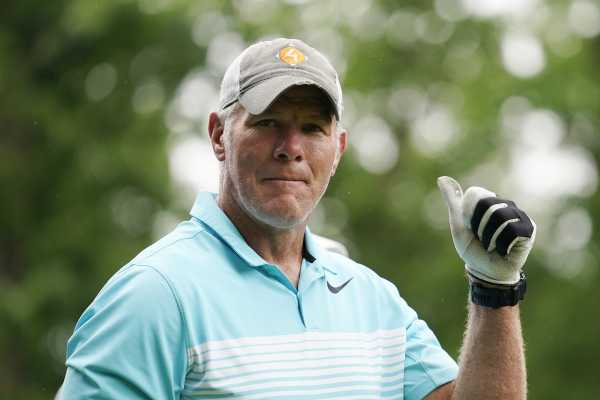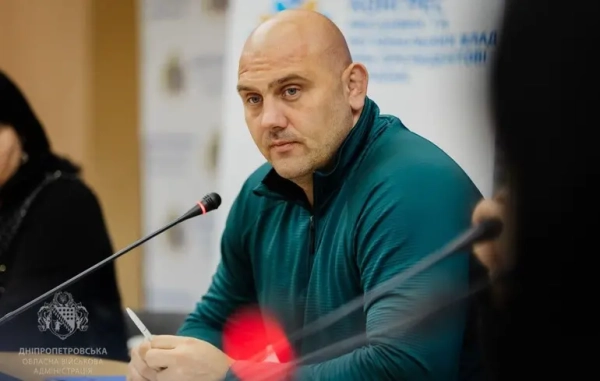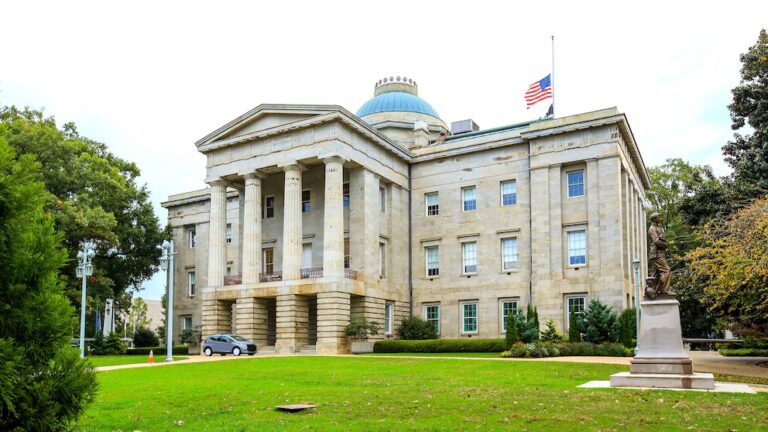
We live in an age of brazen, ham-handed grift. Have you heard the one involving the retired NFL star, a WWE wrestler, corrupt Southern officials, and the millions in welfare money that they benefited from?
If you’ve heard about this scandal, it’s likely because of the involvement of former Green Bay Packer Brett Favre, specifically the $1 million in federal welfare money he received for talks he apparently did not give and the $5 million he was involved in directing toward construction of a volleyball stadium at the college his daughter attended. Favre’s name is what pushed this from dry newspaper stories in 2020 announcing arrests of local bureaucrats to Stephen A. Smith yelling on ESPN about poverty in Mississippi.
But while Favre’s involvement has brought more attention to the story, it’s unfortunately narrowed the focus to a single ex-athlete, instead of taking in the extraordinarily sprawling web of corruption enveloping the state.
What do you think of Vox? Tell us!
We want to get to know you better — and learn what your needs are. Take Vox’s survey here.
This scandal takes different shapes depending on the vantage from which one looks at it. Close up, it’s a sleazy, almost comically corrupt scheme by a few bureaucrats and nonprofit officials; zoom out and it looks more like an entire state government has become something closer to organized crime; pull back even further and the whole country’s welfare system is implicated, its very structure encouraging heinous misuse and waste even as poor people receive a fraction of what they need.
To understand how the fraud was perpetrated, it’s helpful to have some basic knowledge of how the United States’ alphabet soup of welfare programs works.
TANF — or Temporary Assistance to Needy Families — is the program that replaced AFDC — Aid to Families with Dependent Children — in the welfare reform of 1996. With the aim of “ending welfare as we know it,” TANF ended direct entitlement cash payments to poor families with children and created a block grant to states that they could use toward four statutorily dictated goals:
In 2022, it’s easy to see the assumptions embedded in the law about poor people, especially poor Black women.
The combined effect of relaxing rules on where money went, adding work requirements, and allowing states to define who qualified as “needy” had an effect that has only accelerated since 1996: fewer poor families receiving benefits. The Center on Budget and Policy Priorities releases a “TANF-to-poverty ratio,” which tells you how many families are receiving TANF benefits for every 100 in poverty. The national number in 1996 was 68; it’s currently 21, the lowest ever. This average masks enormous interstate differences: In Texas, Mississippi, and Arkansas, just four out of 100 families in poverty receive TANF cash assistance.
As the nonpartisan Congressional Research Service notes, this has not been because of an overall reduction in poverty: “Most of the post-1994 decline in the cash assistance caseload resulted from a reduction in the share of eligible families receiving benefits, rather than a reduction in the number of families meeting states’ definitions of being a needy family.”
The Mississippi welfare scandal has been burbling in the news for a while now, but its true import has never really sunk in beyond policy wonk circles. It’s a vivid illustration of how the welfare reform of 1996 has played out. What happened in Mississippi is less a case of criminal masterminds perpetrating a heist, and closer to walking into a vault that welfare reform left open and unguarded, all while purporting to protect the government from mooching citizens.
The Mississippi welfare fraud up close
At its core, the fraud for which six people so far have faced criminal charges was fairly simple.
John Davis, the director of the Mississippi Department of Human Services (MDHS), funneled tens of millions of dollars in block-granted TANF money to a nonprofit, Mississippi Community Education Center, under the guise that the nonprofit was performing and subcontracting TANF-allowable activities. To be clear, the act of directing TANF funds to a nonprofit is legal so long as the nonprofit is actually performing tasks that go toward the goals outlined above.
That is not what was happening in Mississippi. Nancy New, head of the Mississippi Community Education Center, was instead kicking back money to Davis, his friends, and his family while enriching herself and her family as well. (A second nonprofit, the Family Resource Center, was also involved, but none of its personnel have been criminally charged.) On Thursday, Davis pleaded guilty to federal and local charges; New herself pleaded guilty in April.
The civil lawsuit the state filed to try to claw back some of the funds has 38 defendants, each its own lurid mess. It’s impossible to cover even a fraction of the cases here, but a few details alleged in the suit give a good sense of what was going on:
- John Davis’s nephew was paid $400,000 to create “coding academies” for the two nonprofits. He had no experience as a computer programmer and produced nothing.
- Davis’s brother-in-law was paid over $600,000 for a nonexistent job and a lease on a nonexistent building.
- Marcus Dupree, a former college football phenom, was paid $371,000 to buy a 4,000-square-foot house, with a swimming pool, pavilion, and “adjoining acreage on which Mr. Dupree was to maintain horses.” Dupree claimed in charity filings it would be for “equestrian activities for underprivileged children.”
- To capture the full range here: “Illegal Diversions of TANF Funds To Enrich Sports Celebrities” needed its own subheading in the suit.
Many instances of misuse didn’t even end up in the suit. For instance, the Clarion Ledger found $43,000 spent on Bible-inspired children’s books by a Christian singer named Jason Crabb. Auditors later determined this was “indicative of abuse and waste.”
Apart from these cases, Davis, the MDHS director, became very close acquaintances with the DiBiases; sons Ted Jr. and Brett, and father Ted Sr. All are wrestlers, and Ted Sr. in particular was a prominent WWE wrestler.
According to the suit, starting in 2017, huge sums of TANF money began flowing from the two nonprofits. Ted Jr. set up dummy companies “Priceless Ventures” and “Familiae Orientem,” which were paid around $3 million. These payments were marked as “leadership training” and supporting inner city youth for purposes of TANF eligibility. Brett DiBiase’s $160,000 tab for a four-month stay at a luxury drug rehab in California called Rise in Malibu was covered, and TANF money paid for Davis’s first-class flights and accommodations to visit him — all for the ostensible purpose of examining top-notch models in drug treatment to mimic in their own state. Brett also accepted contracts and money for work he was supposedly performing during his rehab stay. Ted Sr., whose nickname as a performer was “The Million Dollar Man,” received $1.7 million in support of his wrestling ministry.
These individual cases, as ridiculous as they sound, add up to staggering sums. In all, the state auditor found at least $77 million misused from 2017 to 2020. Mississippi’s yearly TANF spending has ranged anywhere from $55 million to $104 million in federal TANF funds in recent years.
Zooming out: The Mississippi government’s role
Reporting from Anna Wolfe — the Mississippi Today reporter whose years-long investigation has formed the backbone of the entire story — and others has continued finding strands leading well past Davis.
Then-Gov. Phil Bryant (R) personally texting Brett Favre reassurances is one. Another was the fact that one of those defendants under the “Sports Celebrities” subheading was a college linebacker who is current Republican Gov. Tate Reeves’s “longtime personal trainer and buddy.” He received more than $1 million in TANF money to host three fitness boot camps. Bryant personally intervened to have MDHS help his great-nephew, who allegedly ended up receiving state-funded drug rehabilitation. Nancy New, the nonprofit head, is friends with Bryant’s wife.
And the investigation itself has been less vigorous than the criminal arrests might suggest. The state auditor, Shad White, who had ties to Bryant, had in the view of close observers waited a strangely long time to report findings to the federal government, which would have an obvious interest in federal money being stolen. An original forensic audit by MDHS in 2021 was clearly hamstrung by someone, with the accounting firm denied access to documents and limited in scope, according to reporting by Mississippi Today. The original lawyer leading the civil suit was fired by the state earlier this year. The depositions of the defendants in that case have been postponed.
Wolfe says there was “a concerted effort by people in charge of this investigation at the beginning to steer the direction away from the governor, to take it as high up as John Davis and Nancy New and stop there.” She goes on to say that “the way that state government is run in Mississippi, people are totally afraid to say anything at any time for fear of losing their jobs.”
But if low-level employees were in a state of fear, elites in the state were not. Text and email communications between these governors, professional athletes, and businessmen show virtually no concern that they could be documenting ongoing crimes.
In addition to the volleyball and speaking money, Brett Favre had around $2 million of TANF dollars routed to Prevacus, a pharmaceutical company he invested in, according to Wolfe’s reporting. Prevacus’s founder and president, Jake VanLandingham, texted Bryant just days after he left office to say, “I’d like to give you a company package for all your help. … We want and need you on our team!!!” to which Bryant responded, “Sounds good. Where would be the best place to meet.”
Favre texted VanLandingham at one point: “This all works out we need to buy her and John Davis surprise him with a vehicle I thought maybe John Davis we could get him a raptor.” [sic] Ted DiBiase Sr., on receiving a particular TANF payment for $250,000 for motivational speaking, forwarded it to his sons saying, “Look what I got today!” This feeling of impunity may be understandable: neither Favre, VanLandingham, Bryant, nor DiBiase Sr. has yet been charged with a crime.
All of this taking of funds comes alongside a deterioration in services; Mississippi saw its predominantly Black capital of Jackson lose usable water for a month and a half. Reeves, the current governor, joked one day after a boil-water advisory was lifted that it was “as always, a great day to not be in Jackson.”
The real welfare fraudsters
Finally, there’s the bleak reality that while Mississippi’s TANF spending is notable for its shamelessness, it’s less of an outlier than you might think.
While Mississippi had a slush fund for personal gain and favors, TANF acts as a slush fund for state governments everywhere. Its structure as a block grant, its lack of oversight, and the paternalistic structures of its 1990s policy goals have allowed states to use the money on almost anything they want, whether filling budget holes or funding lawmakers’ pet projects.
Some of that spending has been in theory defensible, such as money going toward college scholarships or foster care. But many states have used money that could’ve helped poor people on programs that don’t look much different from Mississippi’s.
A single company in Oklahoma used more than $70 million in TANF money to run adult relationship classes and make pro-marriage ads. Many states divert welfare money to fund “crisis pregnancy centers,” or thinly veiled anti-abortion clinics. Utah cut back cash aid only to have state caseworkers repeatedly tell applicants to seek help from the LDS Church, including non-Mormons who would need to be baptized to receive aid. Many states just don’t spend the money at all, amassing tens of billions of unspent dollars, even during the pandemic.
Experts I talked to were blunt about the program’s failings. Aditi Shrivastava, a senior policy analyst at CBPP, told me simply, “TANF’s focus should be cash assistance.” Heather Hahn, a senior fellow at the Urban Institute, pointed out that of “the four purposes of TANF, none of them is to reduce poverty. … The ideology of the program is not about reducing poverty.”
The obvious irony is that decades of welfare debates, and TANF’s structure itself, were driven by the often racist and sexist fear that mothers, especially Black mothers, were getting money they didn’t deserve and wasting it. But the kind of staggering organized theft that took place in Mississippi was only possible because of TANF’s giant-pool-of-money design. Shrivastava and Hahn both told me that such fraud would have been nigh-impossible under AFDC’s cash payment system.
One remaining question is why the program hasn’t been reformed or fixed. The answer may be found in these numbers: According to Wolfe, in 1996, 33,000 adults were receiving assistance in Mississippi. Last year, and with at least $77 million gone elsewhere, that number was 208 adults.
In other words, it hasn’t been fixed because it’s performing the way it was designed to.
Jack Meserve is the managing editor of Democracy: A Journal of Ideas.
Our goal this month
Now is not the time for paywalls. Now is the time to point out what’s hidden in plain sight (for instance, the hundreds of election deniers on ballots across the country), clearly explain the answers to voters’ questions, and give people the tools they need to be active participants in America’s democracy. Reader gifts help keep our well-sourced, research-driven explanatory journalism free for everyone. By the end of September, we’re aiming to add 5,000 new financial contributors to our community of Vox supporters. Will you help us reach our goal by making a gift today?
Sourse: vox.com






